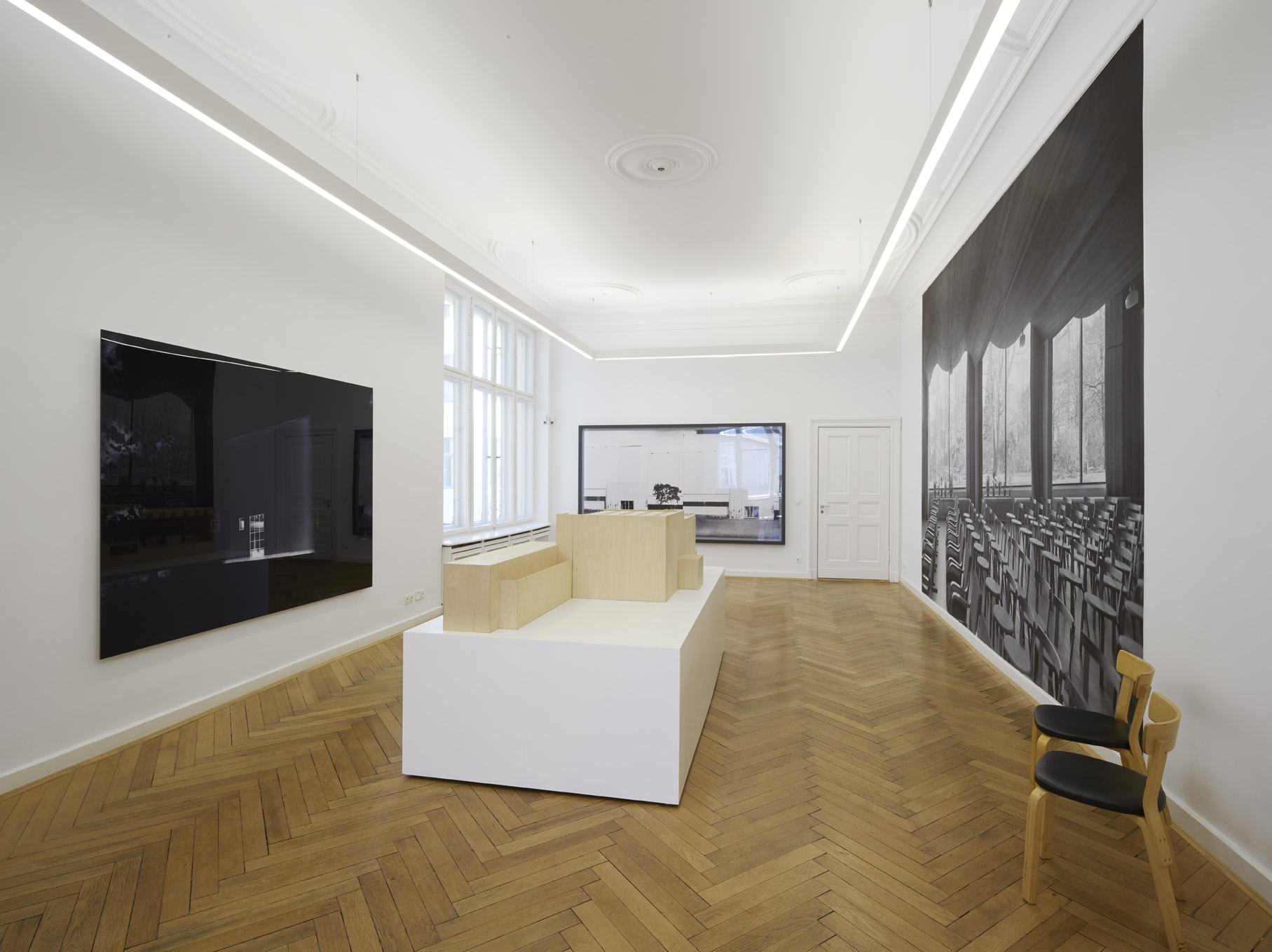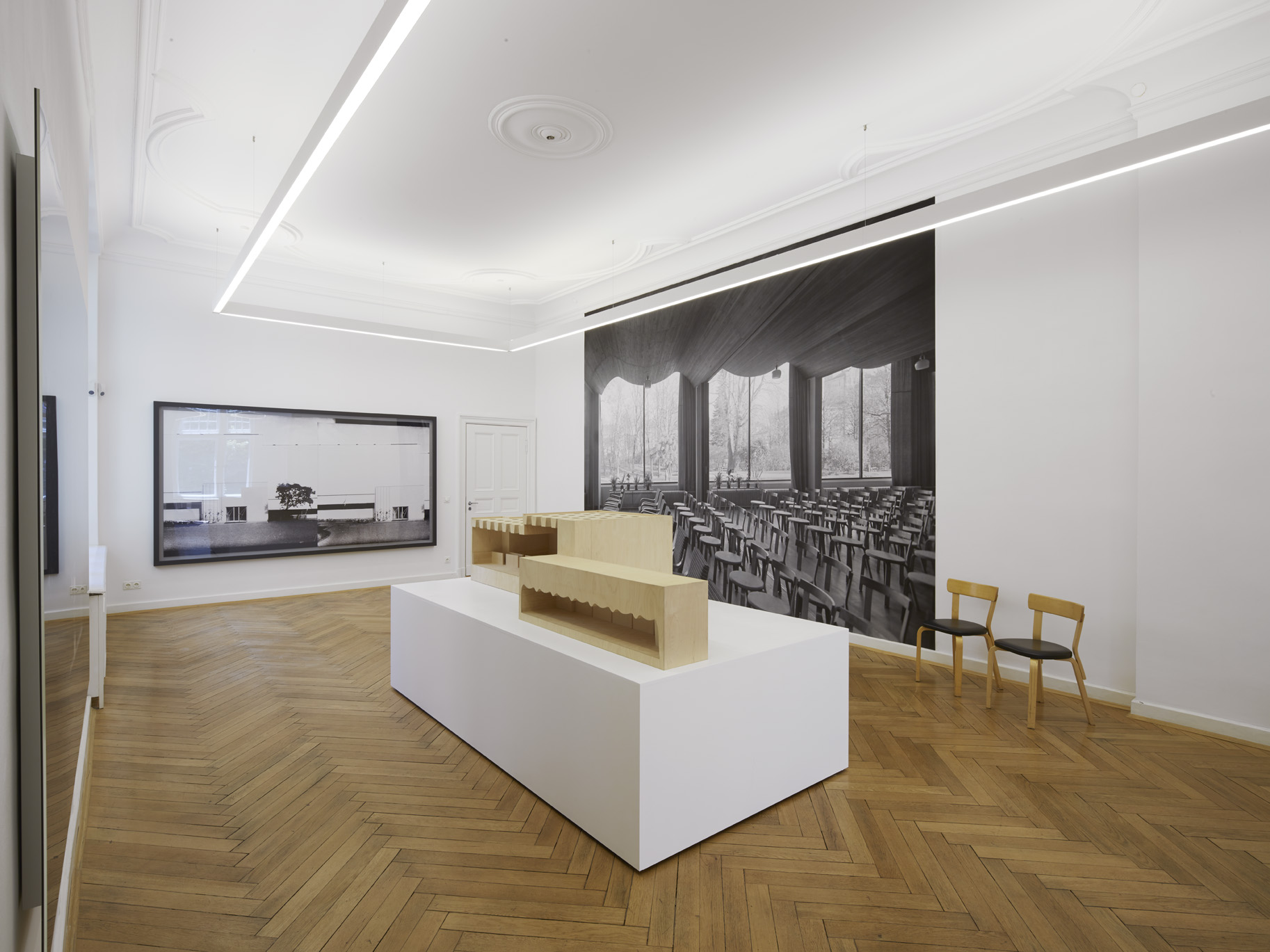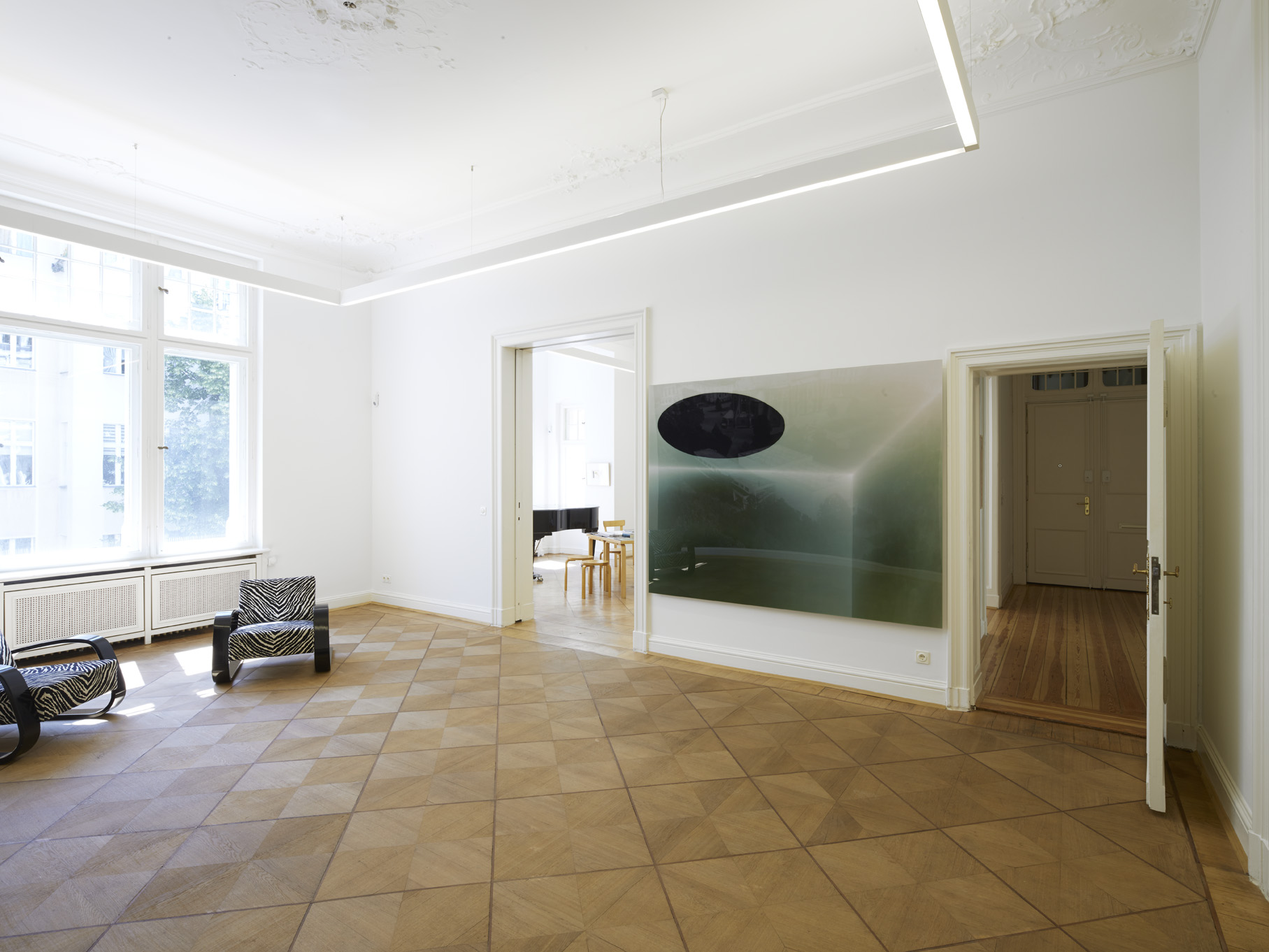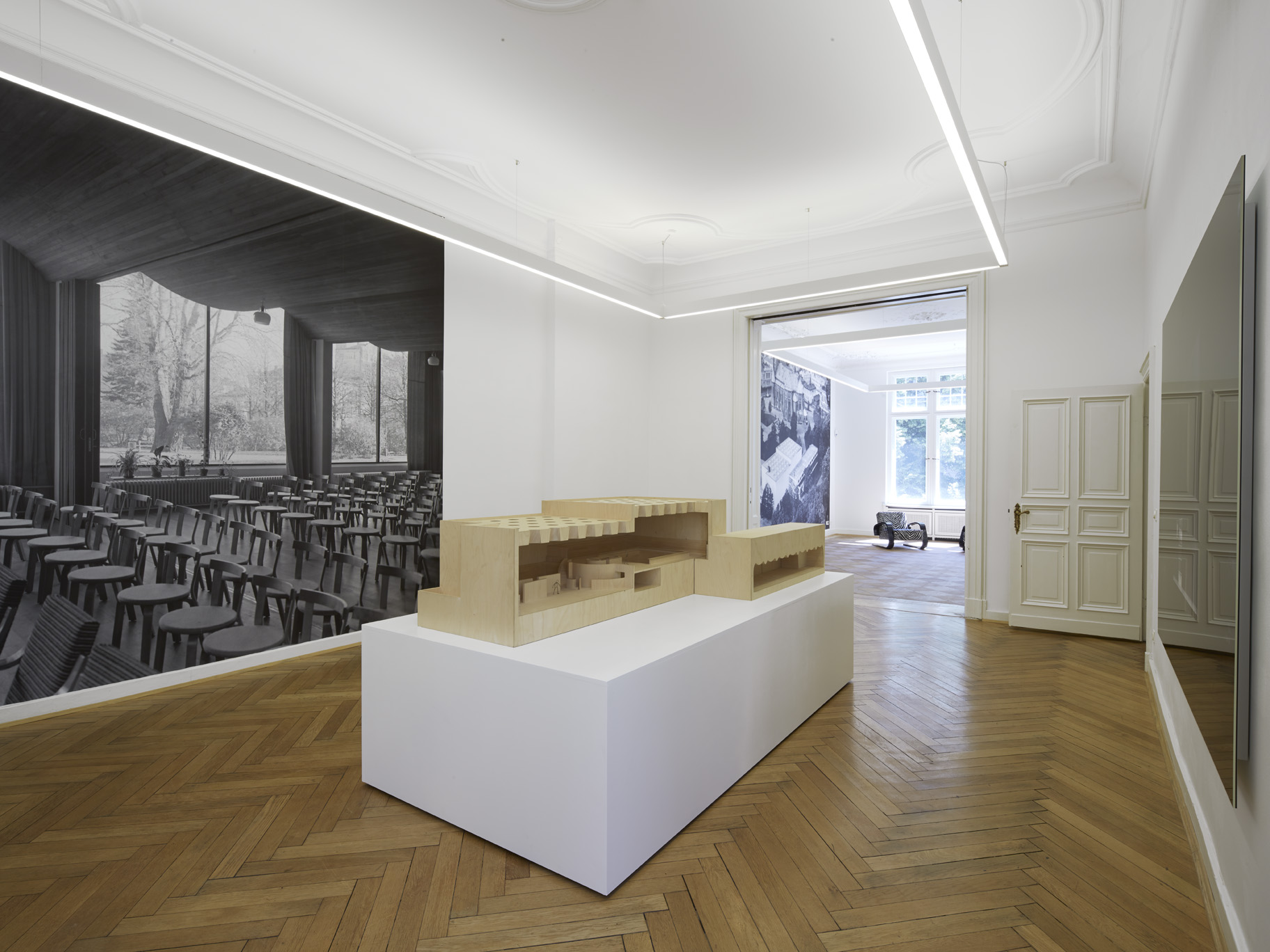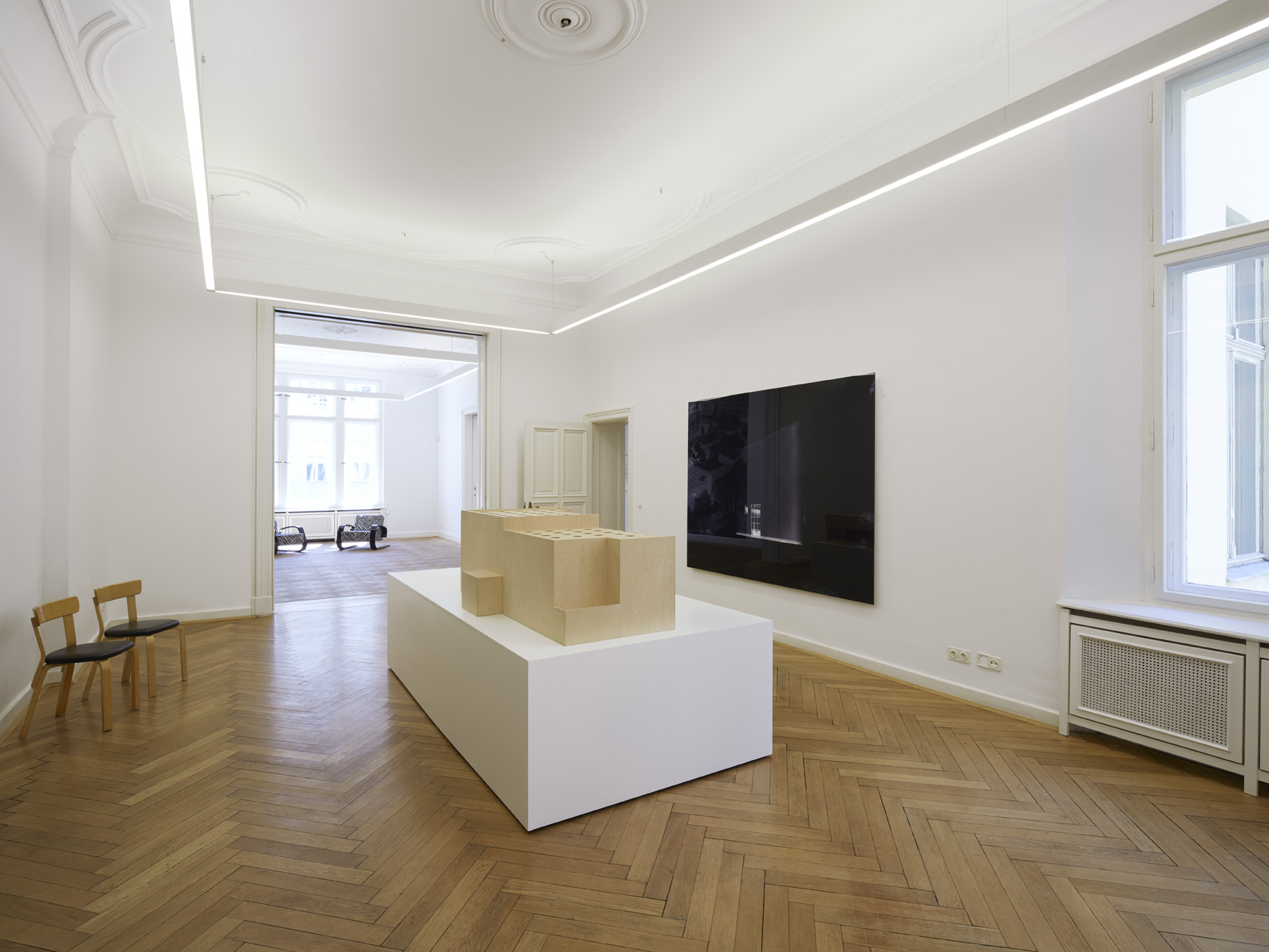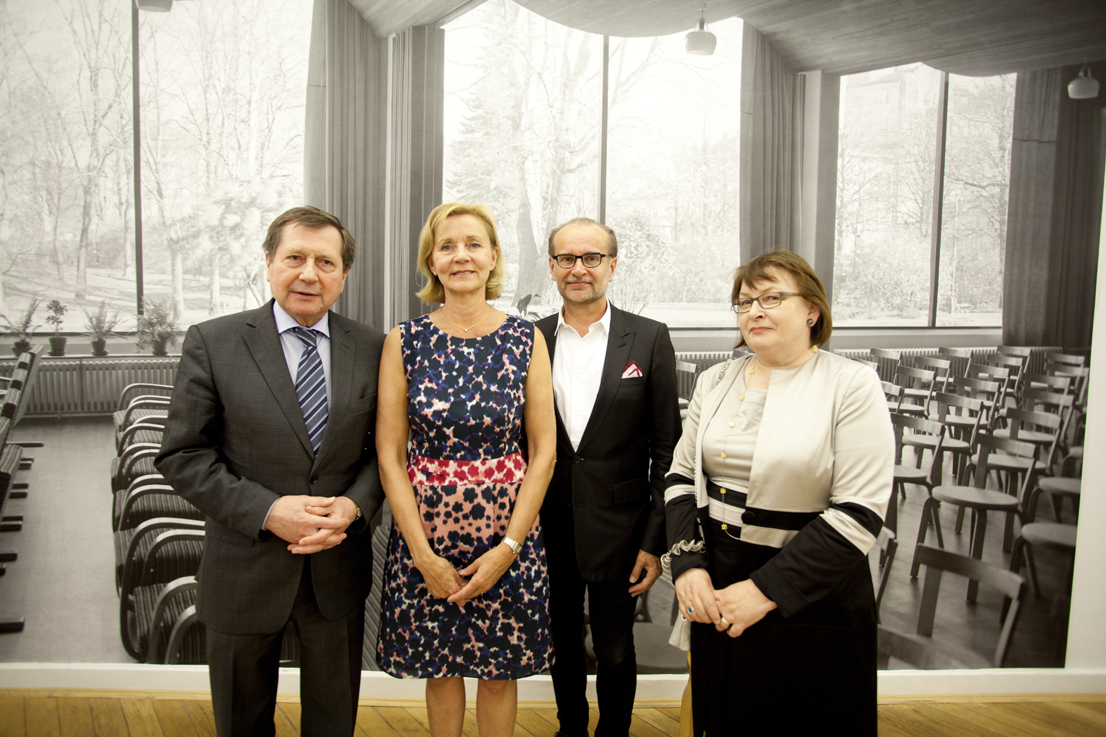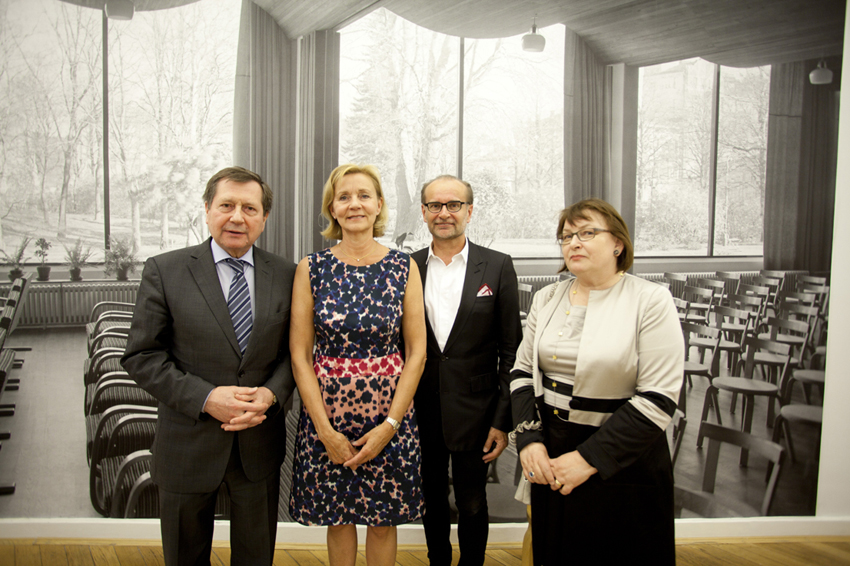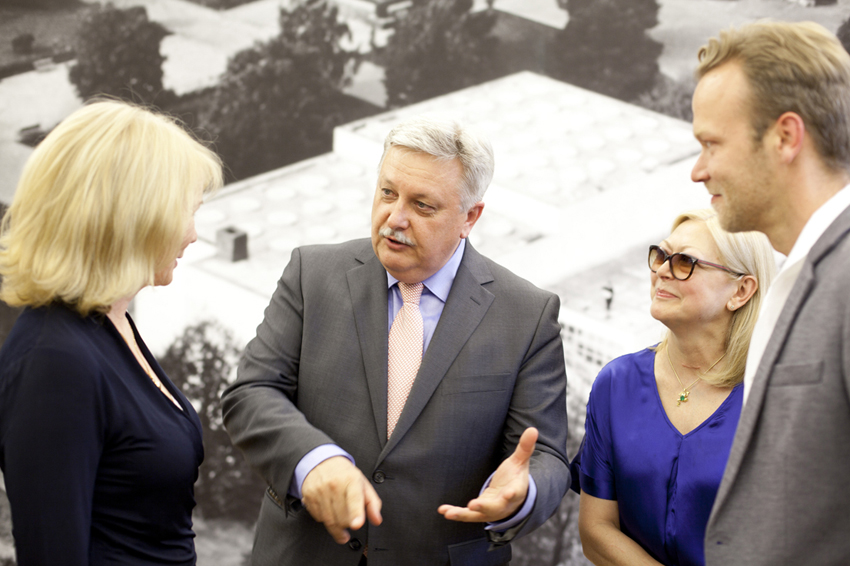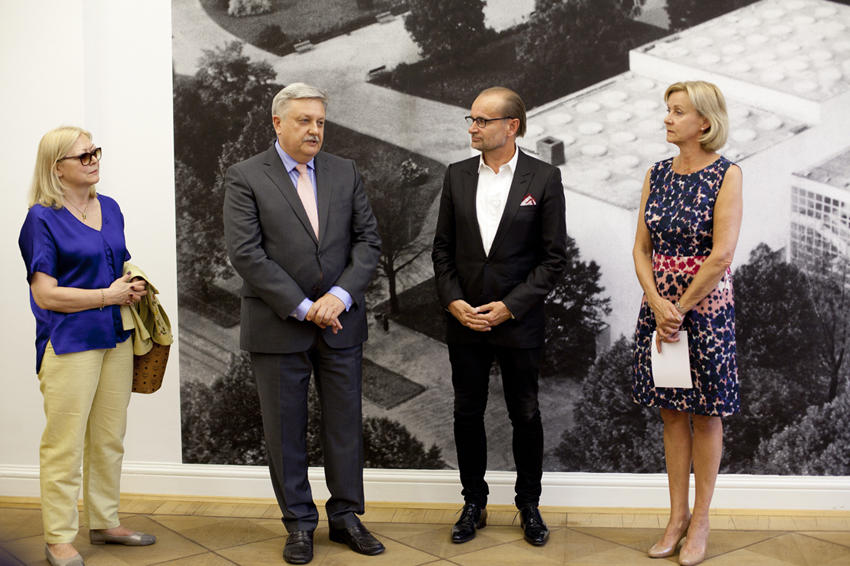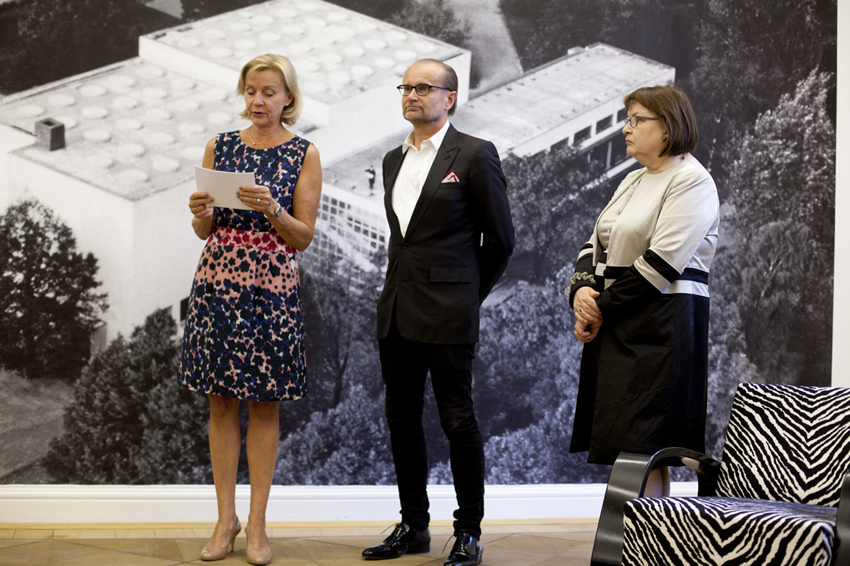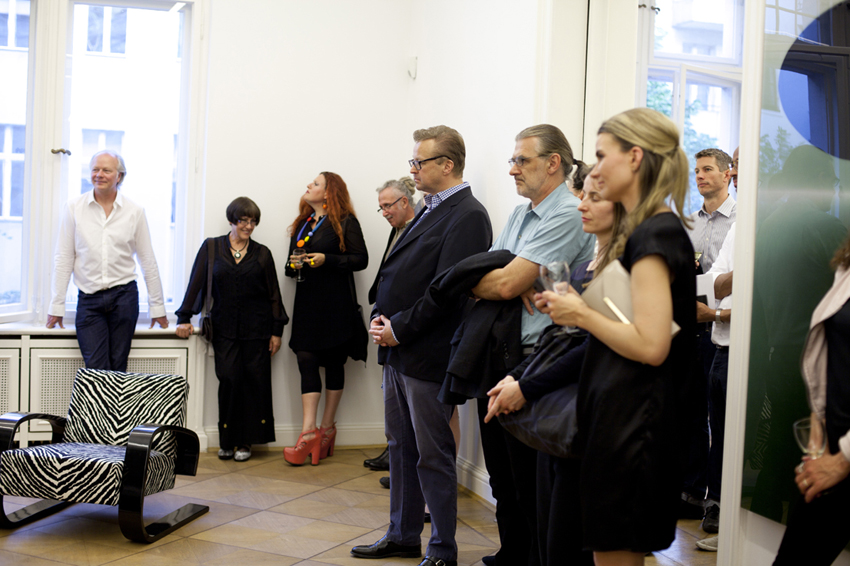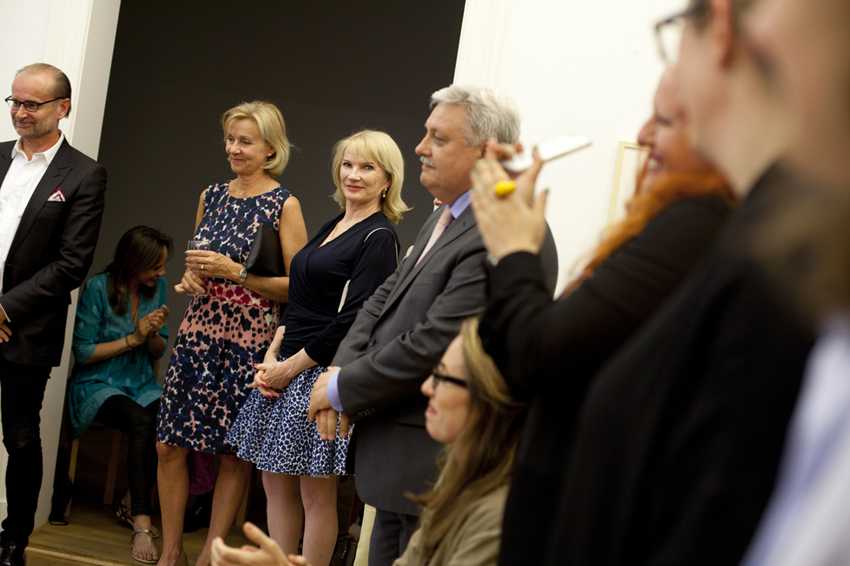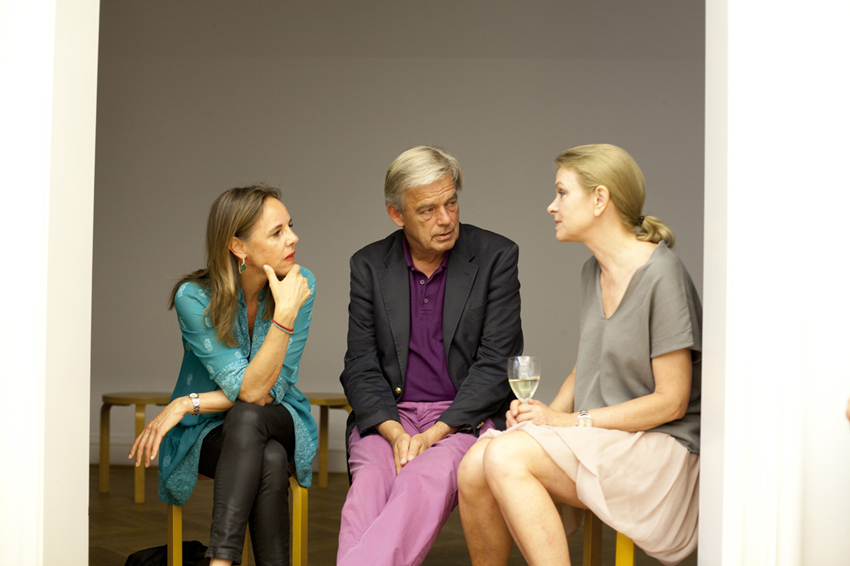THE ALVAR AALTO LIBRARY OF VYBORG
13.06.2015 – 05.09.2015
with contributions by Ola Kolehmainen and Liisa Roberts with ‘What’s the Time in Vyborg?’
Opening: Thursday, June 11th 2015, 6 – 9 pm

The exhibition tells the story of the Alvar Aalto Library in Vyborg in the context of works by Ola Kolehmainen and Liisa Roberts with the collective “What’s the Time in Vyborg?”. The contemporary artists spun their concepts around the idea of the building, its history and its architecture to create new works.
Alvar Aalto (*1898, Kuortane, FIN, + 1976, Helsinki FIN) won the design competition for the new Vyborg Central library in 1927. By the time the final drawings were prepared in December 1933, Aalto had become a thoroughbred Functionalist. When the Library was completed, it attracted worldwide attention and, in conjunction with Paimio Sanatorium, it raised Aalto up to become one of the figureheads of Modernism.
Vyborg Library ceased to be used by the Finns at the end of the Second World War, when Vyborg was ceded to the Soviet Union. The building survived the war with little damage, but remained unused for twenty years after the war with disastrous consequences. In 1961, the Library was reopened after being renovated according to the conditions that prevailed at the time.
The condition of the building deteriorated over the years and initiatives to save the building were made as early as the 1970s. The restoration project did not get started, however, until 1991 when some funds had been collected by public subscription. From the very beginning, the Finnish Committee for the Restoration of Vyborg Library has acted as designer, director and supervisor of the project. The work was completed in November 2013, largely due to the allocation of substantial funding by the Russian Government.
This restoration project, straddling the frontiers of two countries, has successfully brought back to life the original architectural value of the building.
Ola Kolehmainen (*1964 in Helsinki FIN, lives and works in Berlin, GER) undertook several journeys surveying the site and constructional history of the Vyborg library. He uses architecture and archival footage as a raw material and initial point to create abstract photographic works that are far from documentation. Space, light and colour are his inspiration. Two works, “Library 1 & 2”, 2011 were already presented in the context of the 2012 collaboration and exhibition with the Alvar Aalto Foundation, whereas “Library 3”, 2015, is on view for the first time and was created for this current exhibition.
What’s the time in Vyborg? —a long-term, community-based project initiated in 2000 by Liisa Roberts (* 1969 in Paris, FRA, lives and works in Helsinki, FIN and St Petersburg, RU)—took as its starting point the post-cold-war collaboration between Russian and Finnish cultural organizations to restore the Alvar Aalto Library in Vyborg. Through the unpredictable unfolding of collaborative events that exist in the lived environment, Roberts’ work in Vyborg comments on the difficulty of reflecting and containing lived experience. “ What’s the Time in Vyborg?” is a film created from visual materials and documentation gathered over the working process of the project. It is loosely based on the script created by local teenagers who were central participants of the project. Soviet renovation Architect Aleksander Mihailovich Shver (1928-2015) contributed the design of an occasional cinema for screening What’s the Time in Vyborg? in the library’s auditorium, echoing simultaneously Aalto’s design and Soviet plans for it’s reconstruction. The screenings at Salon Dahlmann are dedicated to his memory.
The exhibition tells the story of the Alvar Aalto Library in Vyborg in the context of works by Ola Kolehmainen and Liisa Roberts with the collective “What’s the Time in Vyborg?”. The contemporary artists spun their concepts around the idea of the building, its history and its architecture to create new works.
Alvar Aalto (*1898, Kuortane, FIN, + 1976, Helsinki FIN) won the design competition for the new Vyborg Central library in 1927. By the time the final drawings were prepared in December 1933, Aalto had become a thoroughbred Functionalist. When the Library was completed, it attracted worldwide attention and, in conjunction with Paimio Sanatorium, it raised Aalto up to become one of the figureheads of Modernism.
Vyborg Library ceased to be used by the Finns at the end of the Second World War, when Vyborg was ceded to the Soviet Union. The building survived the war with little damage, but remained unused for twenty years after the war with disastrous consequences. In 1961, the Library was reopened after being renovated according to the conditions that prevailed at the time.
The condition of the building deteriorated over the years and initiatives to save the building were made as early as the 1970s. The restoration project did not get started, however, until 1991 when some funds had been collected by public subscription. From the very beginning, the Finnish Committee for the Restoration of Vyborg Library has acted as designer, director and supervisor of the project. The work was completed in November 2013, largely due to the allocation of substantial funding by the Russian Government.
This restoration project, straddling the frontiers of two countries, has successfully brought back to life the original architectural value of the building.
Ola Kolehmainen (*1964 in Helsinki FIN, lives and works in Berlin, GER) undertook several journeys surveying the site and constructional history of the Vyborg library. He uses architecture and archival footage as a raw material and initial point to create abstract photographic works that are far from documentation. Space, light and colour are his inspiration. Two works, “Library 1 & 2”, 2011 were already presented in the context of the 2012 collaboration and exhibition with the Alvar Aalto Foundation, whereas “Library 3”, 2015, is on view for the first time and was created for this current exhibition.
What’s the time in Vyborg? —a long-term, community-based project initiated in 2000 by Liisa Roberts (* 1969 in Paris, FRA, lives and works in Helsinki, FIN and St Petersburg, RU)—took as its starting point the post-cold-war collaboration between Russian and Finnish cultural organizations to restore the Alvar Aalto Library in Vyborg. Through the unpredictable unfolding of collaborative events that exist in the lived environment, Roberts’ work in Vyborg comments on the difficulty of reflecting and containing lived experience. “ What’s the Time in Vyborg?” is a film created from visual materials and documentation gathered over the working process of the project. It is loosely based on the script created by local teenagers who were central participants of the project. Soviet renovation Architect Aleksander Mihailovich Shver (1928-2015) contributed the design of an occasional cinema for screening What’s the Time in Vyborg? in the library’s auditorium, echoing simultaneously Aalto’s design and Soviet plans for it’s reconstruction. The screenings at Salon Dahlmann are dedicated to his memory.

